Art Dogs is a weekly dispatch introducing the pets—dogs, yes!, but also cats, lizards, marmosets, and more—that were kept by our favorite artists. Subscribe to receive these weekly posts to your email inbox.
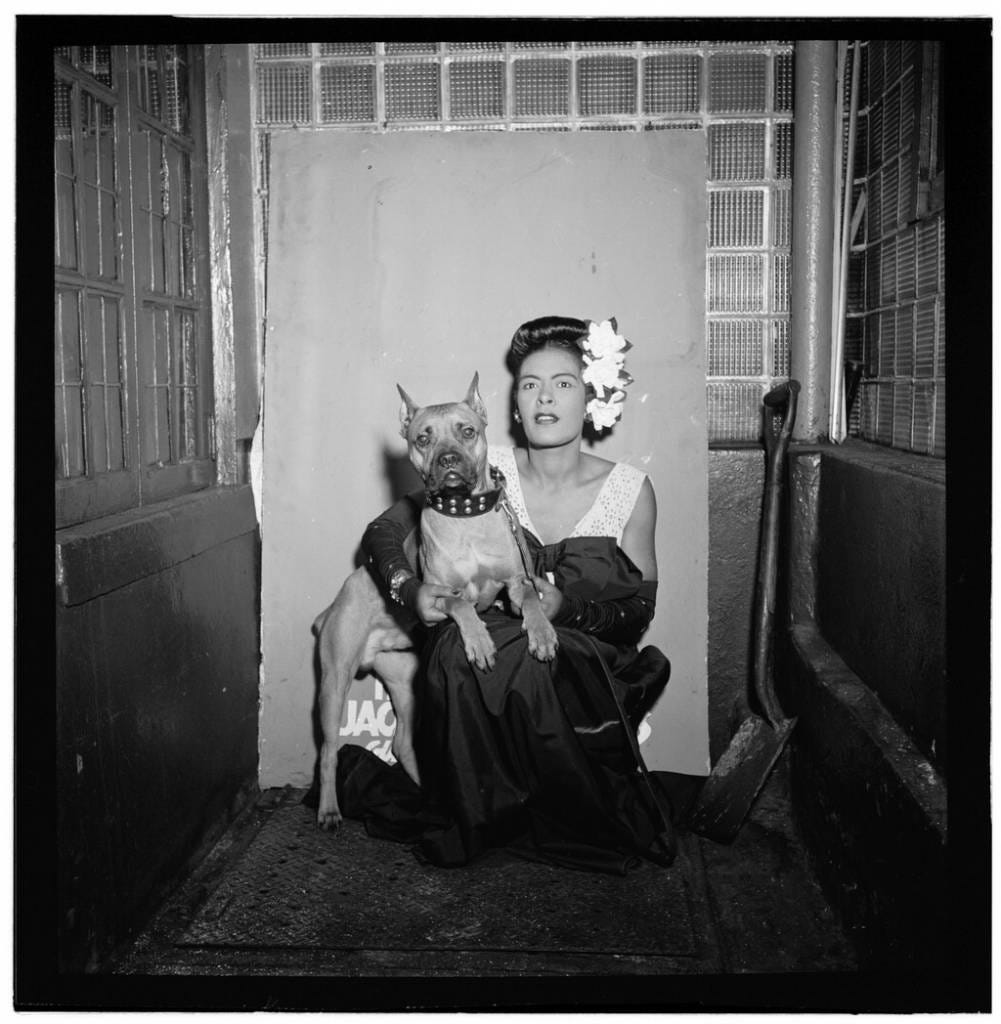
Eleanora Fagan—better known as Billie Holiday—had an exceptionally difficult life. She was born to teenage parents, and her father abandoned the young family. Eleanora dropped out of school in the fifth grade and found a job running errands in a brothel. It was at the brothel that she first heard Louis Armstrong and Bessie Smith records through the open windows.1 ("I guess that I'm not the only one who heard their first good jazz in a whorehouse," Eleanora would write in her 1956 memoir.) When she was twelve, Eleanora moved with her mother to Harlem, where she joined her mom as a sex worker and ended up in jail for the first time.
As a star, Billie was openly bisexual and had numerous affairs throughout her life with men and women, including a number of abusive relationships. She suffered from ongoing addiction and was repeatedly arrested for narcotics. She died with $.70 in the bank, and $750 cash strapped to her leg, with cops waiting outside her hospital room to arrest her if she survived.
The bright spots in Billie Holiday’s life came from her music and her dogs. Lena Horne recalled that when the two jazz divas were together, they talked mainly about Billie’s dogs. “She was just too sensitive to survive,” Horne recalled. “The thing I remember talking to her about most were her dogs; her animals were really her only trusted friends.”
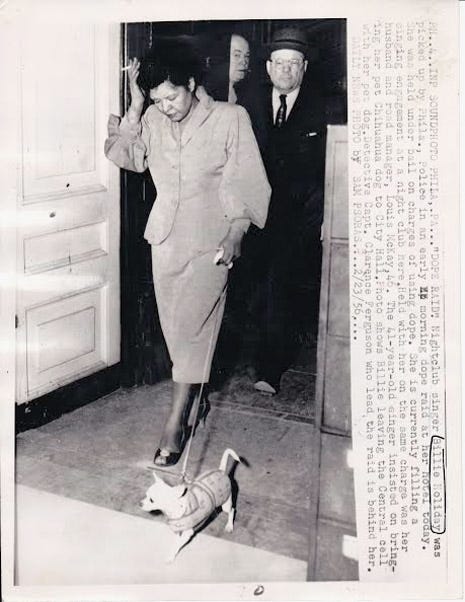
Billie would take in sick pups or strays that had nowhere else to go. There was Gypsy, the Great Dane, Bessie Mae Moocho, the wire-haired terrier, and a beagle. And there was the beloved standard poodle who, on his death, Billie wrapped in her best mink coat for the cremation.
It’s hard to find photos of those dogs, but fortunately it’s easy to find pictures of Billie with her two Chihuahuas, Chiquita and Pepe, whom she carried around in her pocket, fed from a bottle, and reportedly would put diapers on herself.
Despite such evident affection for her two Chihuahuas, most say her soulmate was a boxer named Mister.
Billie knit Mister sweaters and would cloak him in a mink coat. Mister accompanied Billie to glamorous clubs in Harlem, where waiters would serve him prime steaks. While she performed, he reportedly “kept fans at a polite distance,” and stood watch over her in the backstage dressing room. Big Stump said:
Mister was just the best hang-out dog on Earth, you know. Mister could take it, poor thing. I don’t know how he did it, and in between bartenders and whatever would feed Mister. Mister would sit backstage near to where he could hear Lady’s voice. As long as he heard her voice, he was happy.2
Billie would sing to Mister, and photos show that he was a big part of her domestic life. The photograph below captures Billie in her Harlem apartment cooking a steak with Mister in 1948. The image was for an article titled “I’m Cured for Good,” that was published after Billie went through a string of incidents related to drugs, including a one-year stint in prison.
From her childhood to her death, Billie faced the biggest turmoils a human being can be asked to endure—pain caused by sex, race, addiction, fame, love, and money. While hers is in many ways a tragic story, it’s also a reminder of the soothing capacity of the animals and art forms we take into our lives. Both act as companions, offering us eyes in even the greatest of storms.
recently wrote this about Billie Holiday: “Over the years, there was Chiquita, Pepe, and Mister to share her domestic life—and no rhythm section or lovers would ever prove as reliable… Even as she created an artistic legacy of incalculable value, she herself was let down by everyone except, perhaps, by Chiquita, Pepe, and Mister.”Until the very end, music seems to have offered Billie a similar salve. By the late 1950s, Billie was frail and emaciated, worn down by alcohol and heroin, but she continued performing. I was so struck by this passage Gilbert Millstein wrote in 1956 about Billie’s last performances at Carnegie Hall:
It was evident, even then, that Miss Holiday was ill. I had known her casually over the years and I was shocked at her physical weakness. Her rehearsal had been desultory; her voice sounded tinny and trailed off; her body sagged tiredly. But I will not forget the metamorphosis that night. The lights went down, the musicians began to play and the narration began. Miss Holiday stepped from between the curtains, into the white spotlight awaiting her, wearing a white evening gown and white gardenias in her black hair. She was erect and beautiful; poised and smiling. And when the first section of narration was ended, she sang – with strength undiminished – with all of the art that was hers. I was very much moved. In the darkness, my face burned and my eyes. I recall only one thing. I smiled.3
You can listen to the live recording of that performance here.
Billie Holiday would die of alcohol-related liver disease three years later at just 44 years old. Some reported that a grocery list was found amongst her possessions. It read: "cigarettes, gin, dog food."
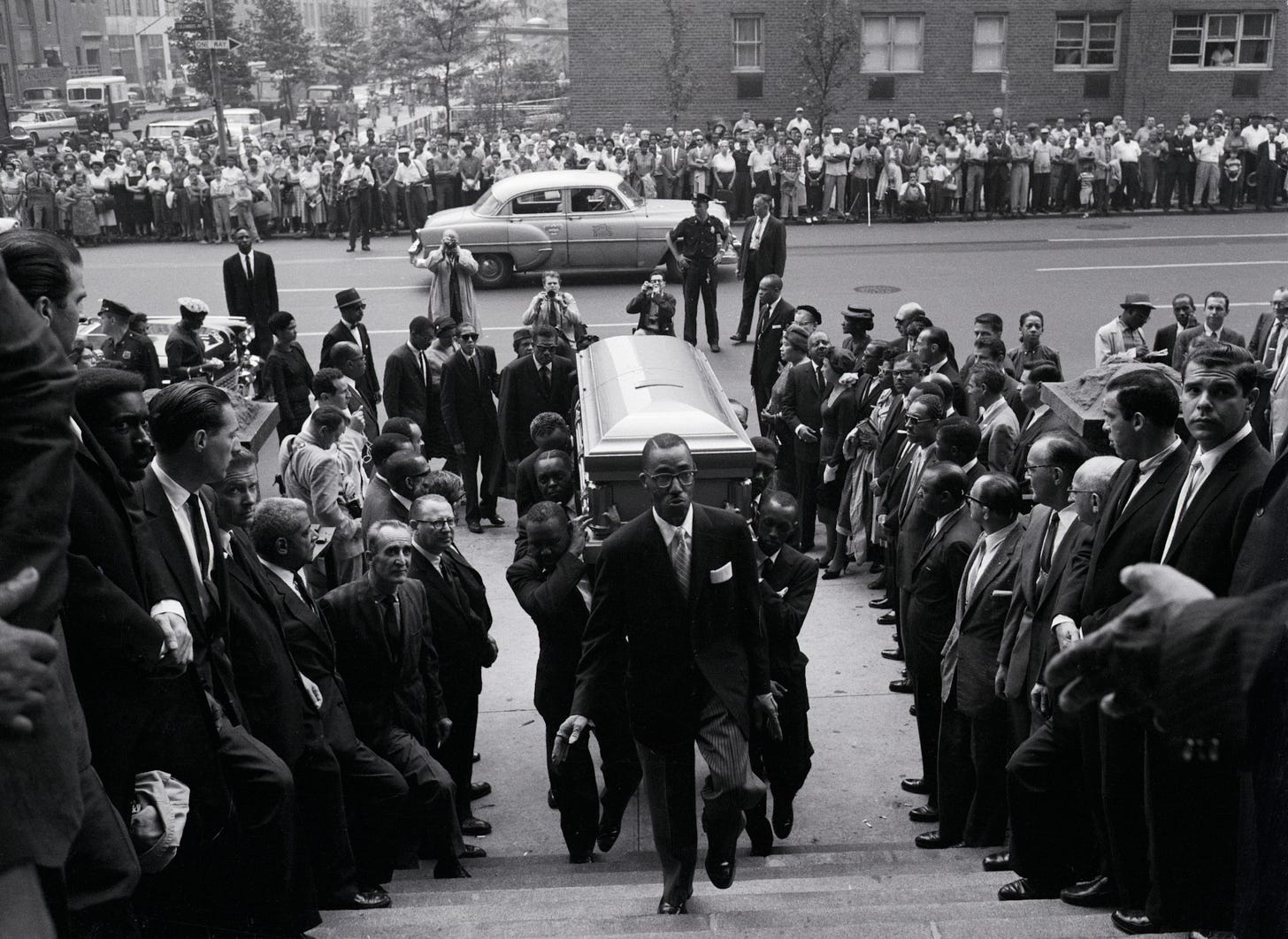
The story of “Strange Fruit” from PBS:
“Strange Fruit” came to Holiday’s attention when she was working at New York’s first integrated nightclub, Café Society in Greenwich Village…the positive audience responses and frequent requests for “Strange Fruit” soon prompted Holiday to close out every performance with the song. Ahead of time, the waiters would stop serving so there was a deathly silence in the room, then a spotlight would shine on Holiday’s face and she would begin to sing:
“Southern trees bear a strange fruit/ Blood on the leaves and blood at the root/ Black bodies swingin’ in the Southern breeze/ Strange fruit hangin’ from the poplar trees…”
Each night, Holiday would perform the song only once, without an encore, after which the lights would go out.
In her day, a protest song objecting to the abuse of Black people, sung two years after Congress refused to pass a bill that would have made lynching a federal crime…"It was extremely brave, when you think about it," Holiday's goddaughter Lorraine Feather told Hari in Chasing the Scream. At a time when most entertainers were warbling love songs (which did make up most of Holiday's repertoire, albeit usually with a heartbroken edge), "you simply did not have a piece of music being performed at some hotel that was about the killing of people—about such a sordid and cruel fact. It was not done. Ever."
Thank you for reading Art Dogs. I’m thrilled to have you here! If you’d like to receive future editions in your inbox, subscribe here:
https://nationalpurebreddogday.com/lady-day-and-her-dogs/
https://en.wikipedia.org/wiki/Billie_Holiday#cite_note-FOOTNOTE''Essential_Billie_Holiday'',1989-93


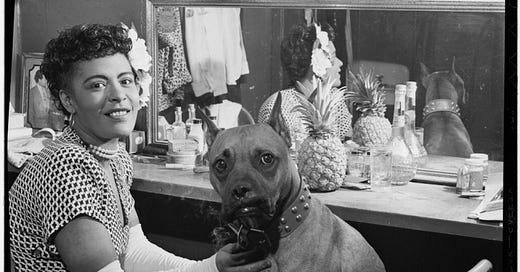



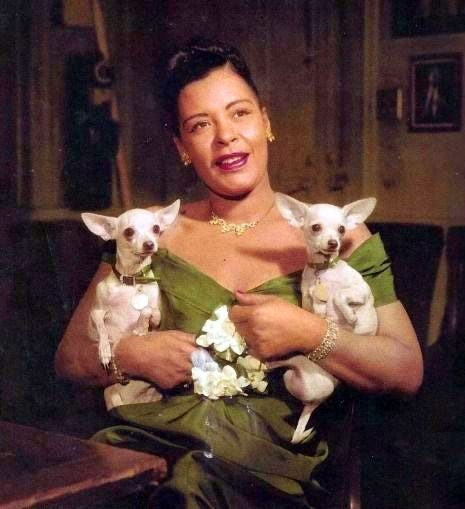

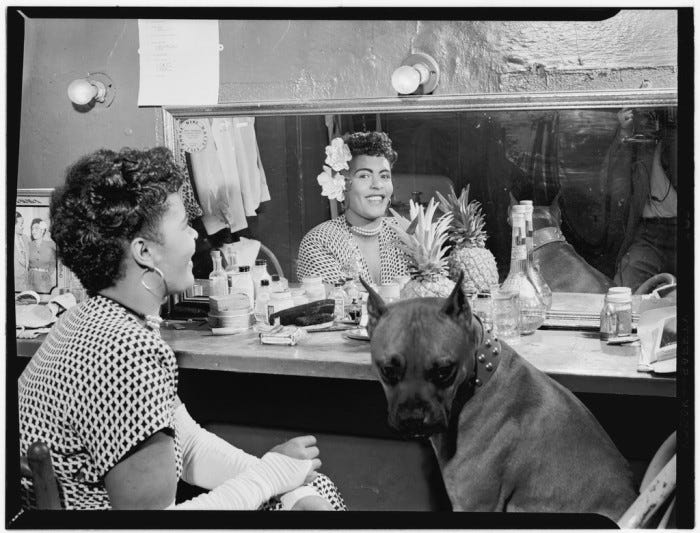



Lovely story... beautifully and sensitively told around Ms. Holiday's best friends 💜
Wonderful post, thank you 🧡